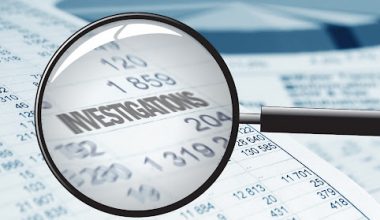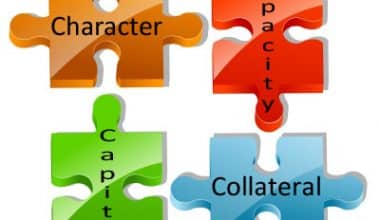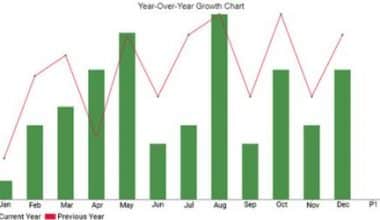The ability to see the big picture is helpful in most areas of life but when it comes to your business, it is imperative that you take a holistic view of things. These days, it is easy to stay on top of your business finances and keep track of all your transactions with the help of a general ledger.
What is a General Ledger?
A general ledger is a record of all of a company’s past transactions, organized by accounts. General ledger accounts contain all of the debit and credit transactions that affect them. They also contain detailed information on each transaction, such as Date, Description, Amount, and can also contain descriptive information about the transaction.
How Does a General Ledger Work?
A general ledger is the foundation of a system that accountants use to store and organize the financial data that is used to prepare the deals. Transactions are posted to individual sub-ledger accounts as defined in the company’s chart of accounts.
The transactions are then finalized or summarized in the general ledger and the accountant creates a trial balance that serves as a report on the balance of each general ledger account. The trial balance is checked for errors and adjusted by posting additional required entries. The adjusted sample balance is then used to prepare the annual financial statements.
How a General Ledger Functions with Double Entry Accounting
A general ledger account is the main part of a general ledger. A general ledger account records all transactions for that account. Transactions related to various elements of accounting, including assets, liabilities, equity, income, expenses, gains, and losses.
Companies that use the double-entry accounting method use a general ledger. This means that every financial transaction affects at least two general ledger accounts and each posting contains at least one direct debit and one credit transaction. Duplicate transactions, known as journal entries, are recorded in two columns with debit entries on the left and credit entries on the right. There must a balance for the total of all debit and credit postings.
The accounting equation on which double-entry accounting is based is as follows:
Stockholders’ Equity=Assets−Liabilities
The balance follows this format and shows detailed information at the account level. For example, on the balance sheet, multiple asset accounts, including cash and accounts receivable, are listed in the “Current Assets” section.
The double-entry method is based on the accounting equation requirement that the transactions posted to the accounts to the left of the equal sign in the formula must equal the total number of transactions posted to the account (or accounts) to the right. Even if the equation appears differently (e.g. assets = liabilities + equity), the balance sheet rule always applies.
There are other Financial management strategy that you may need to know.
General Ledger Examples
Some of the most common financial activities recorded in the general ledger are:
- Deposits to your bank accounts
- Liability accounts including trade payables, trade payables, provisions, and customer deposits
- Checks made out to multiple providers for operating expenses
- Payslips for your employees
- Shareholder equity accounts such as common stock, retained earnings, treasury stock, and other total accumulated income
- Income taxes paid to state and federal agencies
- Sales activity and related debtor activity
- Record of payments received from clients and customers
- Inventory adjustments like receiving the product or adjusting stock levels
- Invoices received and posted
- Any owner contributions to business or withdrawals from the owner
- Any journal entry used to record transactions such as interest and bank charges.
Why Do I Need a General ledger?
Actually, it’s always up to you and your financial advisor to decide what is right for your small business. In case you’re wondering, there are seven compelling reasons you might want to use a ledger for your small business:
- Provides an accurate record of all financial transactions.
- Helps you create a test balance and thus balance your books
- Make tax returns easy because you have your expenses and income in one place
- Reports actual income and expenses so you can keep track of expenses
- Helps you spot unusual transactions immediately
- Helps you identify (and stop) fraud
- It helps in creating important financial statements that are critical to assessing your profitability, liquidity, and overall financial health. This includes the cash flow statement, the income statement, and the balance sheet.
What is the Best Accounting Software to view my General ledger
Any accounting software application that supports double-entry accounting can also generate a general ledger report. Below are just a few of the software applications that have great general ledger reporting capabilities.
GnuCash
GnuCash is unique in many ways. It is free, open source software that you can download and install on a desktop, workstation, or laptop. GnuCash is a single user system and is therefore well suited for smaller businesses or companies that only need one user.
GnuCash offers great reporting options with detailed active and passive reports as well as a comprehensive general ledger report. The reports offer little customization, but there are so many reports available that customization is unlikely to be a problem.
As an open source application, GnuCash is completely free. Simply visit the GnuCash website to download the application to your desktop, workstation or laptop.
FreshBooks
FreshBooks is a great way for small businesses to manage their general ledger. It currently offers four plan options that will help ease the transition to a more powerful plan. FreshBooks is designed to be easy to navigate, making it easy for new users to navigate.
QuickBooks Desktop
QuickBooks Desktop provides great general ledger reporting options for small and growing businesses. It is designed for the single-user office as well as growing multi-user businesses and offers three plans to choose from.
QuickBooks also offers other great reporting options with 100+ standard reports in QuickBooks Pro, while the Premier and Enterprise plan comes with 150+ reports. You can access Report templates are in the QuickBooks desktop applications, and you can easily customize a general ledger report to include only the accounts that you want to view.
You can also learn How to Enter A Bounced Check In Quickbooks
Free General ledger Template
The main purpose of these templates is to record all expenses incurred within a certain period of time. With a unique style and creative background, these templates are very useful and therefore very suitable for the users.
How do I Create a General Ledger Template?
Creating a simple general ledger template takes a lot of intensive field research before the desired conclusions can be drawn. Here are some tips:
- Design a suitable template outline
- Submit any required information that works well for the benefit of customers
- Make an appropriate outline to show the information to the audience
- The templates designed should be easy to use and very effective in their approach.
- Draw up a suitable chart to calculate expenses that include taxes and other charges.
- It also includes data on the interest rates that have been applied to the amount of stocks in debt.
Below are free Sample Ledger Paper Templates. These expertly designed templates are among the top rated templates on the market. With a futuristic design and eye-catching texture, these templates are very productive and therefore benefit customers. Additionally, each of these templates has all of the information that they can improve for the business. Click on the button below to download.
General Ledger Paper Template
Printable General Ledger Template
Ledger Paper Template
Conclusion
The general ledger is your main document for all financial transactions for your company. Understanding how it works can be overwhelming at first, but it doesn’t have to be. All you need to do is understand the basic principles of double-entry accounting, the basic accounting equation, and how to transfer journal entries to the general ledger.
Once you understand and use the ledger, you will see how powerful it is. It offers several compelling benefits for your business. Perhaps most importantly, it is the foundation for preparing financial statements, which are vital to assessing your financial affairs.
RELATED ARTICLE
- What Is DEGREE OF FINANCIAL LEVERAGE: Overview, Formular, Importance
- What Is Strategic Financial Management?- Functions and Importance
- DAYS OF SALES OUTSTANDING- Everything You Need To Know
- Loss Adjustment Expense (LAE): Meaning, How LAE Works
- Book-to-Market Ratio: Definition, Formula, and Calculations






